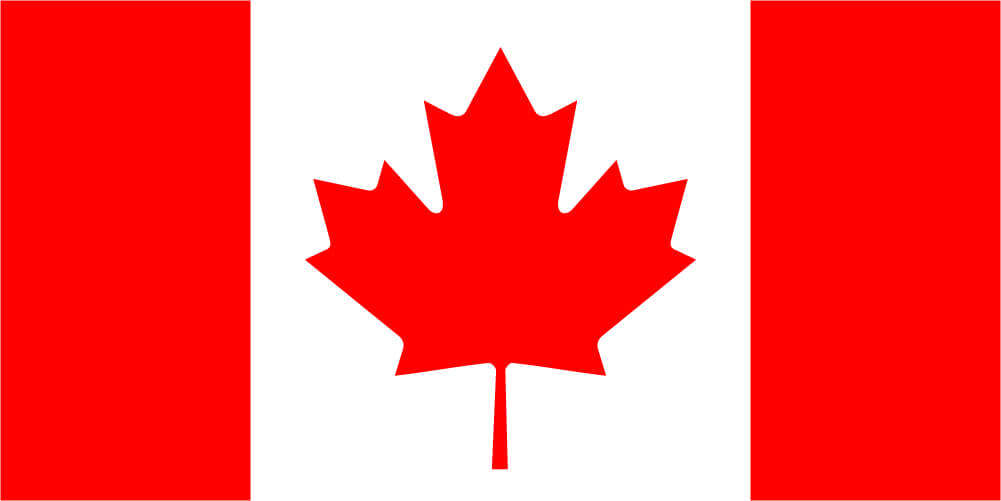Canada is experiencing an increased number of daily COVID-19 infections in what appears to be a “second wave.” In response to higher positivity rates and increased hospitalisations, some provinces have passed strict public health orders to limit the spread of COVID-19. This article discusses the workplace impacts of measures implemented in Ontario, Québec, and British Columbia.
Ontario
On November 3, 2020, Ontario introduced a five-tiered system with respect to COVID-19 closures and restrictions. The Government of Ontario will monitor COVID-19 cases across the provinces and place different regions into different tiers depending on outbreak levels. The five tiers, in order from least restrictive measures to most restrictive, are (1) “prevent,” (2) “protect,” (3) “restrict,” (4) “control,” and (5) “lockdown” (with each progressive level indicating increased restrictions on top of the restrictions that were required by the previous level). Employers may want to be aware of the rules and restrictions associated with each tier so that they can continue to remain in compliance with public health requirements.
The following workplace measures are required across the province and apply at every tier:
- Workplaces must conduct pre-entry COVID-19 symptom screenings of all employees and visitors.
- Wherever possible, workplaces are required to maintain physical distancing of two metres or more (even if face masks are used).
- Face coverings are required in indoor workplace areas where workers cannot maintain a distance of least two metres from other persons.
- Eye protection is required for workers who may come within two metres of patrons without face coverings.
| Prevent (Green) | Organized public events and gatherings are restricted to 50 people indoors and 100 people outdoors; the weekly incidence rate is less than 10 per 100,000; and the test positivity rate is less than 0.5 percent. |
| Protect (Yellow) | Workplaces that are open to the public must develop COVID-19 safety plans and they must be available upon request; the weekly incidence rate is between 10 and 24.9 per 100,000; and the test positivity rate is between 0.5 percent and 1.2 percent. |
| Restrict (Orange) | Workplaces that are open to the public must conduct screening questionnaires on all patrons; the weekly incidence rate is 25 to 39.9 per 100,000; and the test positivity is between 1.3 percent and 2.4 percent. |
| Control (Red) | Services requiring the removal of face coverings are prohibited; the weekly incidence rate is greater than or equal to 40 per 100,000; and the test positivity rate is greater than or equal to 2.5 percent. |
| Lockdown (Grey) | Maximum control measures are implemented (return to Stage 1) with gathering limits and widespread closures. |
Ontario has amended the regulations under the Reopening Ontario (A Flexible Response to COVID-19) Act, 2020, and the rules for areas in “lockdown” are similar to the previous rules for areas in “Stage 1” of reopening. Businesses that are not listed in Schedule 2 of O.Reg. 82/20 are not permitted to open while the region is in lockdown. Businesses that are permitted to open must adhere to all applicable laws, including the Occupational Health and Safety Act, and the advice, recommendations, and instructions of public health officials.
On November 23, 2020, at 12:01 a.m., the Toronto and Peel Region entered the “lockdown” tier for 28 days. The lockdown framework includes the following restrictions:
- Outdoor gatherings are limited to 10 people.
- Indoor private gatherings are restricted to persons who live in the same household, and only essential support persons or emergency repair persons are exempted.
- Persons who live alone are permitted to interact with one other person outside of their households.
- Indoor recreation and sports facilities, gyms, and pools are closed.
- Casinos, bingo halls, and gaming establishments are closed.
- Personal care services are closed.
- Nonessential retail operations may operate only through curbside pickup and delivery.
- Essential businesses such as supermarkets, grocery stores, pharmacies, hardware stores, discount and big-box retailers selling groceries; stores that sell beer, wine, and liquor; safety supply stores; and convenience stores are permitted to operate, but they must limit their capacity to 50 percent.
- All essential businesses in Toronto that are permitted to remain open must limit their capacity to 50 percent.
- Restaurants are permitted only to offer takeout and delivery services. All indoor dining and outdoor patios are closed;
- Manufacturing, agriculture, and most construction projects are allowed to continue operating.
- Schools, childcare services, and before- and after-school programs remain open.
In addition to the above restrictions, all businesses and organisations in the grey lockdown zones that are permitted to open must have COVID-19 workplace safety plans.
Québec
Québec’s COVID-19 response also consists of placing regions into separate tiers. Regardless of which tier a region falls under, everyone is required to maintain physical distancing, wear face coverings, and engage in “alternative greeting practices” that do not include touching.
Québec will place each region into a tier after public health authorities review the epidemiological situation, transmission control, and healthcare system capacity.
| Level 1 – Vigilance (Green) | Organized public activities are restricted to 50 people indoors and 250 outdoors. Bars, taverns, and casinos may operate at 50 percent capacity with alcohol and food sales ending at midnight. These types of businesses must collect contact tracing information. This level corresponds to weak community spread. |
| Level 2 – Early Warning (Yellow) | The same restrictions as above apply, but this level is required as soon as viral transmission grows. |
| Level 3 – Alert (Orange) | Organized public activities are restricted to 25 people for both indoor and outdoor locations. No alcohol or food sales are permitted after 11:00 p.m., and there may only be a maximum of six patrons per table. Contact tracing information is also still required. This level is required when viral transmission is deemed higher. |
| Level 4 – Maximum Alert (Red) | Organized public activities are prohibited. Dining rooms must close, with only delivery, takeout, and drive-through services permitted. Saunas and spas must close. All organized sports and recreational activities must cease, but indoor sports facilities may remain open for individual use as long as dressing rooms are not used. |
On December 2, 2020, the government of Québec announced additional restrictions on operators of commercial establishments whom are subject to the Act respecting hours and days of admission to commercial establishments that includes retailers, food stores and drugstores.
Under these new rules, businesses will need to reduce the maximum number of customers in their establishments by using a formula provided by the government. Once the maximum number of patrons has been calculated, the business will need to post a sticker on the entrance of its establishment indicating the number of patrons allowed inside at any give time. Additionally, businesses will also need to ensure that all patrons wear the appropriate face covering and respect social distancing rules while inside the building.
British Columbia
In response to rising COVID-19 infections, British Columbia recently released new province-wide restrictions “by order and direction of the Provincial Health Officer” that apply to all individuals, places of work, and businesses, and impose a variety of obligations on employers. These new restrictions are in effect from November 19, 2020, at midnight to January 8, 2021, at midnight.
The following restrictions now apply:
- Social gatherings of any size at a household with persons who are outside of the household or “core bubble” are prohibited, whether indoor or outdoor.
- Funerals, weddings, and baptisms are limited to 10 people.
- Religious gatherings and worship services are suspended and may not take place in person.
Further, on November 24, 2020, British Columbia issued a public safety order under the Emergency Program Act requiring British Columbians to wear masks in all retail stores and many indoor public spaces. According to the order, an “indoor public space” includes the indoor common area of an office building.
It is anticipated that Emergency Management BC will issue a further order to enforce requirements for mask wearing in common areas of workplaces. However, until that order is issued, the wearing of masks in shared indoor workplaces, including elevators, hallways, lobbies, and stairwells is likely warranted.
Employers must review their COVID-19 safety plans.
British Columbia’s order requires employers to review and update their COVID-19 safety plans to ensure they adequately protect workers from COVID-19 transmission in the workplace. COVID-19 safety plans are required for all employers in the province. Employers must also remind employees to monitor themselves daily and stay at home if they present any COVID-19 symptoms.
Other employer obligations under British Columbia’s order
- “[E]mployers must make every effort to provide work from home options.”
- Employers must ensure that workers who attend the workplace participate in a daily health screening for COVID-19 symptoms.
- Employers must not allow any worker to attend the workplace if the employer is not satisfied that the worker has performed a daily health check.
- Employers must ensure that all workers and customers maintain appropriate physical distancing of two metres or more, with extra care to be taken in small office spaces, break rooms, and kitchens. Employers must review WorkSafeBC’s COVID-19 Safety Plan documentation.
Ogletree Deakins will continue to monitor and report on developments with respect to the COVID-19 pandemic and will post updates on the firm’s Coronavirus (COVID-19) Resource Center as additional information becomes available. Important information for employers is also available via the firm’s webinar and podcast programs.
Michael C. Comartin is a partner in the Toronto office of Ogletree Deakins.
Ryan Martin is an associate in the Montréal office of Ogletree Deakins.
Christina S. Persad is an associate in the Toronto office of Ogletree Deakins.
Caroline M. DeBruin is a 2020 graduate of Queen’s University, Faculty of Law, and an articling student in the Toronto office of Ogletree Deakins.







